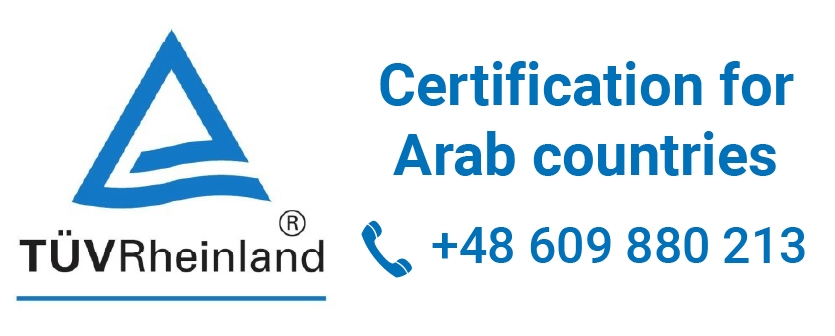Thematic group:
Choose the date:
| 2024/11 2024/12 2025/01 2025/02 2025/03 2025/04 |
Date of publication: articles.html- See all
-
 Date of publication: 03-04-2025
Date of publication: 03-04-2025
Groupage logistics, related to the transport of small batches of goods, has played a key role in global trade since ancient times. Its development was closely linked to the progress of civilization, innovations in transport and growing market requirements.
Source: Poland-Transport.eu See more -
 Date of publication: 22-03-2025
Date of publication: 22-03-2025
When transporting dump trucks, special attention is paid to the stability of the load and proper securing to ensure safety throughout the entire route of the construction dump truck.
Source: Poland-Transport.eu See more -
 Date of publication: 16-03-2025
Date of publication: 16-03-2025
Freight transport to and from Serbia plays a key role in European trade, connecting Poland with the Balkans and Southeastern Europe. Serbia, situated on key transport routes, plays an important role as a transit hub.
Source: Poland-Transport.eu See more -
 Date of publication: 15-03-2025
Date of publication: 15-03-2025
Transport to Hungary is an important segment of the international transport market, connecting Poland with Central and Southern Europe. What are the biggest challenges related to the organization of freight transport between Poland and Hungary?
Source: Poland-Transport.eu See more -
 Date of publication: 15-03-2025
Date of publication: 15-03-2025
The most popular form of transport is road transport to Latvia, which guarantees great freedom of action and a relatively quick delivery time. Thanks to the close distance between Poland and Latvia, deliveries can be made even within one day
Source: Poland-Transport.eu See more -
 Date of publication: 14-03-2025
Date of publication: 14-03-2025
Transport companies handling transport from and to Switzerland guarantee fast and safe delivery of goods, using an extensive network of roads and motorways in both directions. It is Polish carriers that effectively carry out freight transport to Switzerland
Source: Poland-Transport.eu See more -
 Date of publication: 13-03-2025
Date of publication: 13-03-2025
Transport to and from Austria is an important, and sometimes even key, segment of international logistics, aimed at ensuring efficient exchange of goods between Poland and one of the key countries of Central Europe, i.e. Austria.
Source: Poland-Transport.eu See more -
 Date of publication: 13-03-2025
Date of publication: 13-03-2025
Polish transport companies transport meat, dairy products, cereals, and fruit and vegetable products to Spain
Source: Poland-Transport.eu See more -
 Date of publication: 12-03-2025
Date of publication: 12-03-2025
The process of transporting wind turbine components, such as wind tower transport, wind turbine blade transport, nacelle transport or nacelle transport, requires a precise approach at every stage of implementation.
Source: Poland-Transport.eu See more -
 Date of publication: 11-03-2025
Date of publication: 11-03-2025
Freight transport Poland Croatia Poland is a dynamically developing sector, which is mainly based on road transport. Efficient logistics and forwarding, modern infrastructure and a well-developed network of motorways enable efficient transport
Source: Poland-Transport.eu See more -
 Date of publication: 11-03-2025
Date of publication: 11-03-2025
Vegetable transport plays a strategic role in the agri-food supply chain, ensuring the efficient movement of products from producers to recipients such as processors, wholesalers, retail chains and individual customers.
Source: Poland-Transport.eu See more -
 Date of publication: 10-03-2025
Date of publication: 10-03-2025
Fruit transport requires special care, as fruits are perishable products and their quality depends on maintaining appropriate conditions during the entire logistics process. A key factor in fruit transport is temperature control
Source: Poland-Transport.eu See more -
 Date of publication: 09-03-2025
Date of publication: 09-03-2025
The most important aspect of effective transport between Poland and Italy is precise planning, selection of appropriate means of transport and knowledge of local regulations, which translates into timely and safe deliveries
Source: Poland-Transport.eu See more -
 Date of publication: 07-03-2025
Date of publication: 07-03-2025
Due to the large dimensions and weight of these machines, the process of transporting road milling machines requires careful preparation of both the transporting vehicle itself and the machine to be transported.
Source: Poland-Transport.eu See more -
 Date of publication: 05-03-2025
Date of publication: 05-03-2025
Motorboat transport is a specific type of boat transport, which often requires appropriate preparation, specialized equipment and considerable experience in the transport of vessels.
Source: Poland-Transport.eu See more
Help needed ?
If you have not found the desired freight, an available truck or a suitable transport and forwarding company, or the search results are not satisfactory for you, do not hesitate to write to us to tell what you are looking for. We will send your inquiry directly to transport companies.
Write to us

 pl
pl  en
en  de
de  es
es  fr
fr  it
it  pt
pt  ru
ru  sv
sv 



